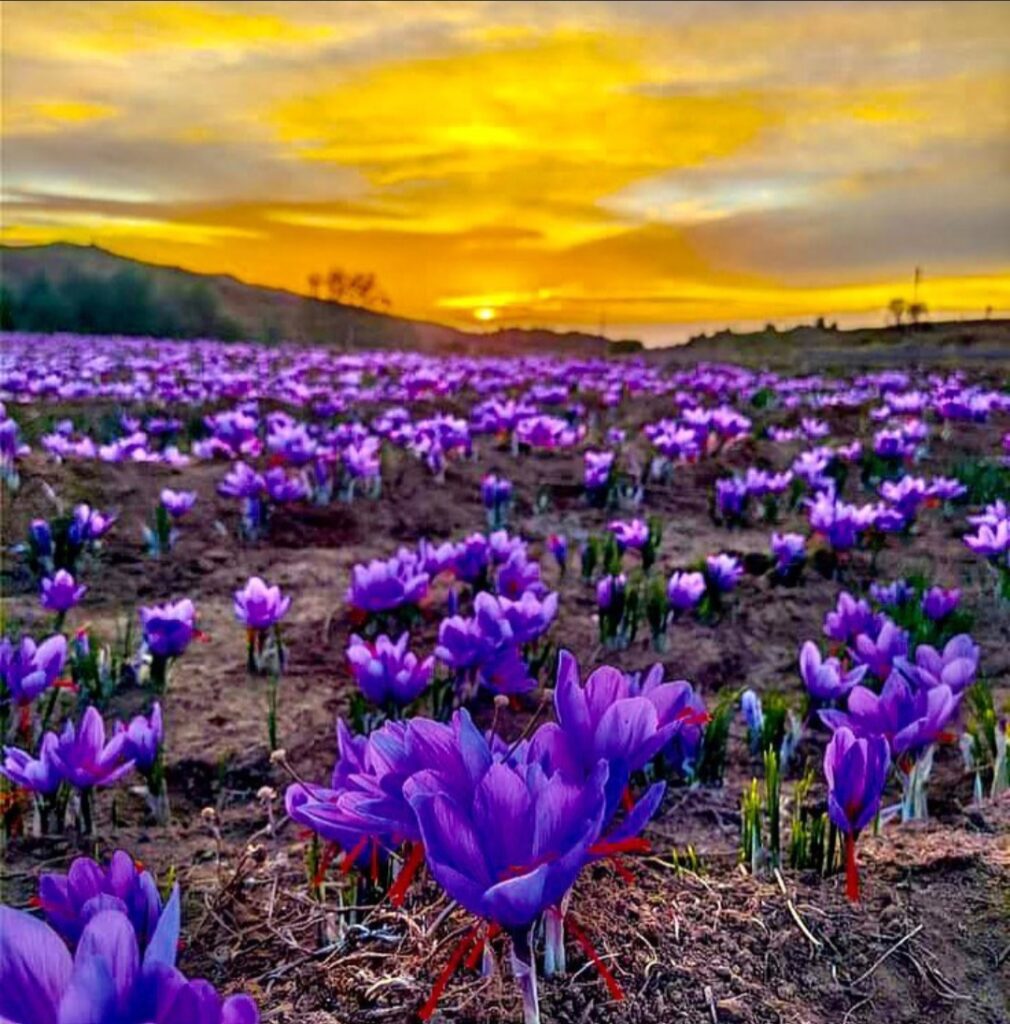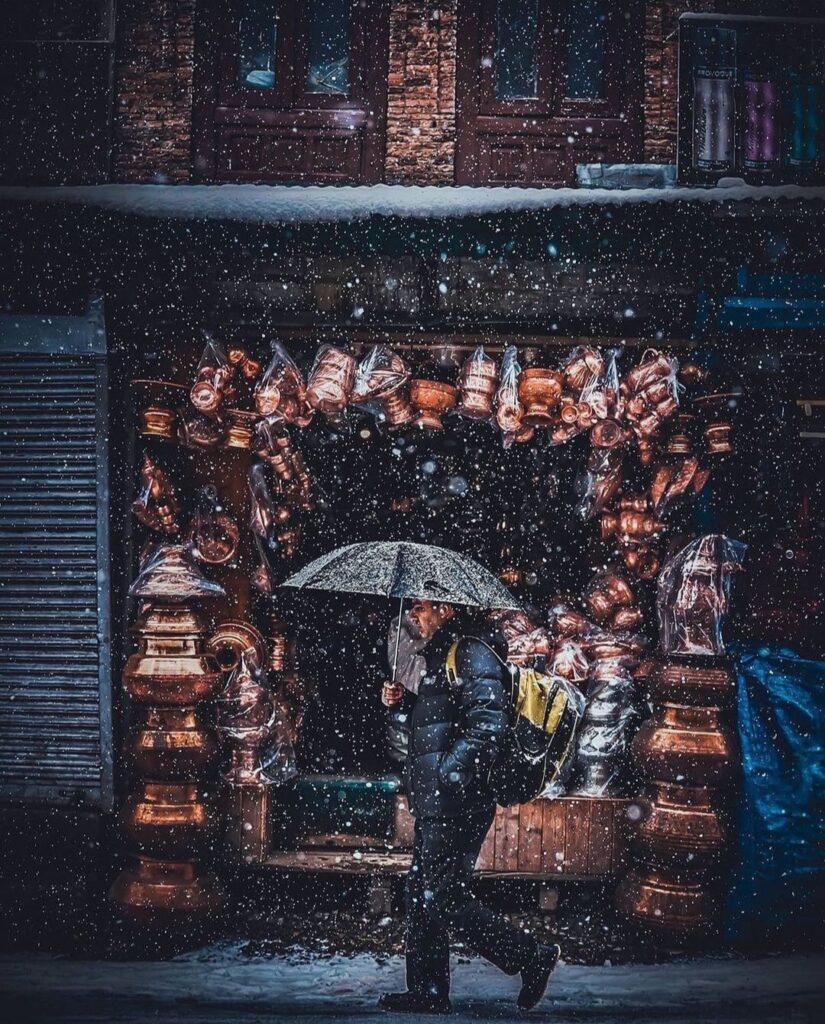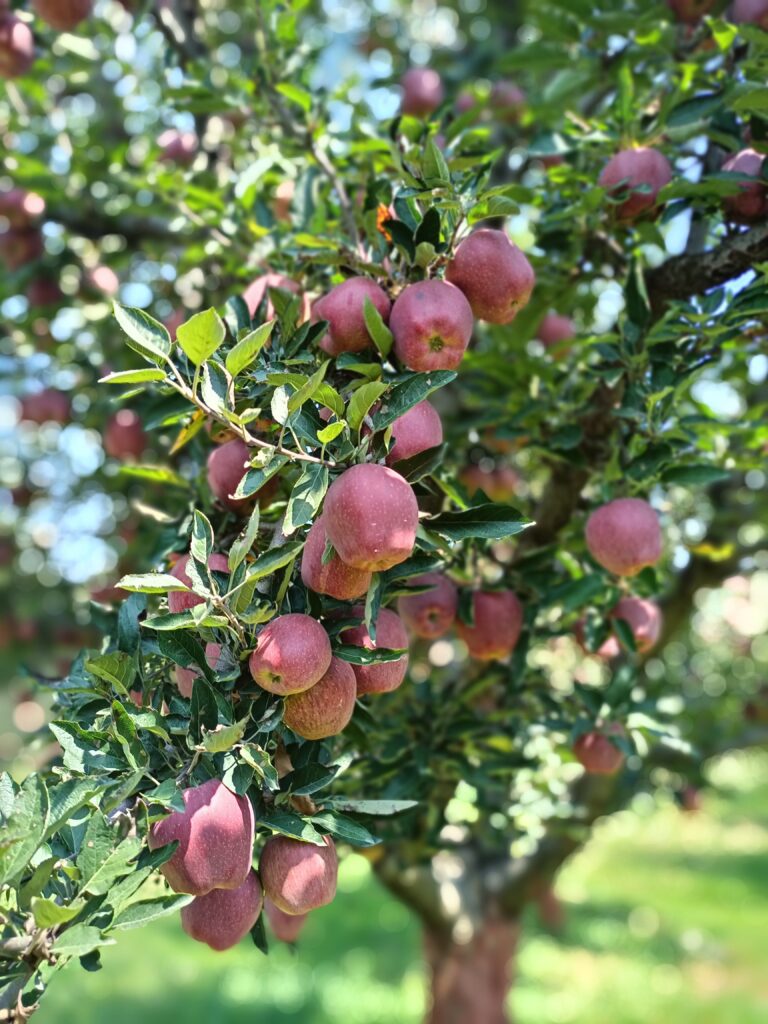Kashmir is the home to many delicacies depending on the occasions, from Wazwan to Dried food, Kashmir has it all. “Need is the real creator“, this applies to remotely placed Kashmir valley, harsh winters have made people of the valley to be more creative when it comes to food. Certain foods are best enjoyed during the winter. Additionally, the Kashmir valley has a variety of winter-specific dishes that increase body warming.
To get through the harsh winters, residents of the landlocked Kashmir Valley have long relied on dried vegetables, brinjal, tomatoes, pumpkins, turnips, smoked fish, and wild herbs. Locals diligently stored washed and air dried vegetables to keep them in good stead during winter, which lasts for roughly five months, as connectivity with the outside world would frequently get cut off due to severe snowfall.
Due to improved road connectivity and superior vegetable growing techniques, fresh vegetables are now always accessible in the local markets; nonetheless, out of nostalgia, the residents continue to swarm the shops to purchase dried treats. Hukh Syun or Dried food acts as a savior during the 40 harshest days of winter locally known as Chilai-Kalan. Cooking and preparing these as winter delicacies is no less than a celebration.
Here is the list of best traditional Kashmiri winter foods ():
Al Hachi – Dried Bottle Gourd
Al Hachi are dried, lengthened, and marginally thickened bottle gourd strands. The bottle gourds are peeled, cut into slices, and sun-dried. Al Hachi is typically prepared with mutton or mild spices. These are occasionally prepared with chicken or meat and served with rice. Both Wangan Hachi and Al Hachi can be cooked with Ruwangan Hachi(Dried Tomatoes).
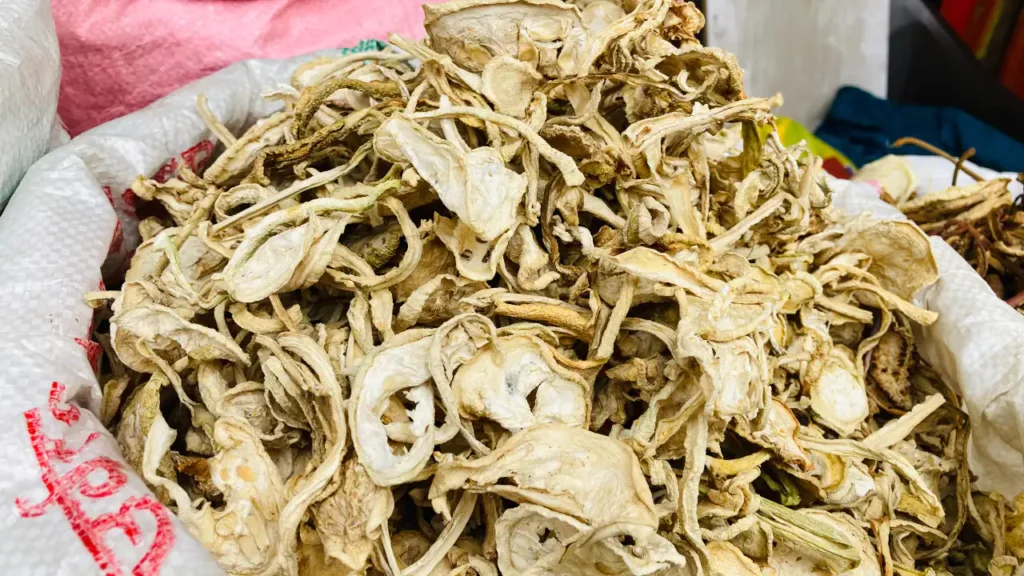

Wangan Hachi – Dried Brinjal
Wangan Hachi is dried brinjals(egg plant) or aubergines. The brinjals are divided into four sections, but the green calyx at the top holds the portions together rather than allowing them to separate. The divided brinjals are dried in the sun by hanging them from a rope that is strung up similarly to a clothesline. Most often, Green Gram or Moong Dal are used to prepare Wangan-Hachi. We also enjoy eating Choki Wangan Hachi, which is dried brinjal with tamarind flavor.
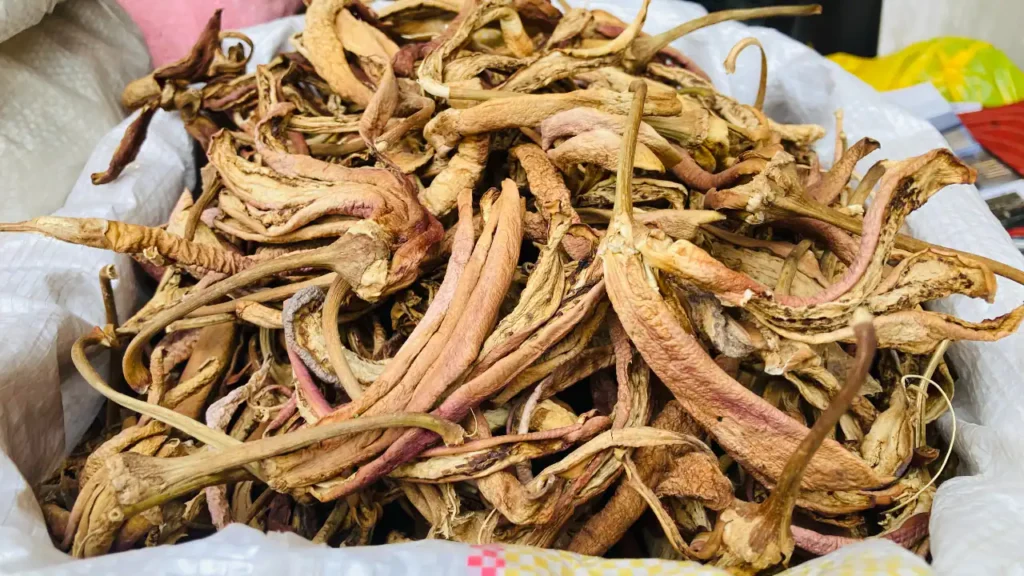

Ruwangan Hachi – Dried Tomatoes
Dried tomatoes are known as Wangan Hachi. They are essentially a component of most places on earth. Around the world, a wide range of tomatoes are dried in their own distinctive ways; some are seasoned with salt, some with herbs, and some are left unseasoned. The taste of Kashmiri Ruwangan Hachi is distinctly chewy and sour. Every time they are cooked in a home, the air is infused with their tangy aroma. Additionally, Ruwangan Hachi can be pulverized and added to curries and other meals.
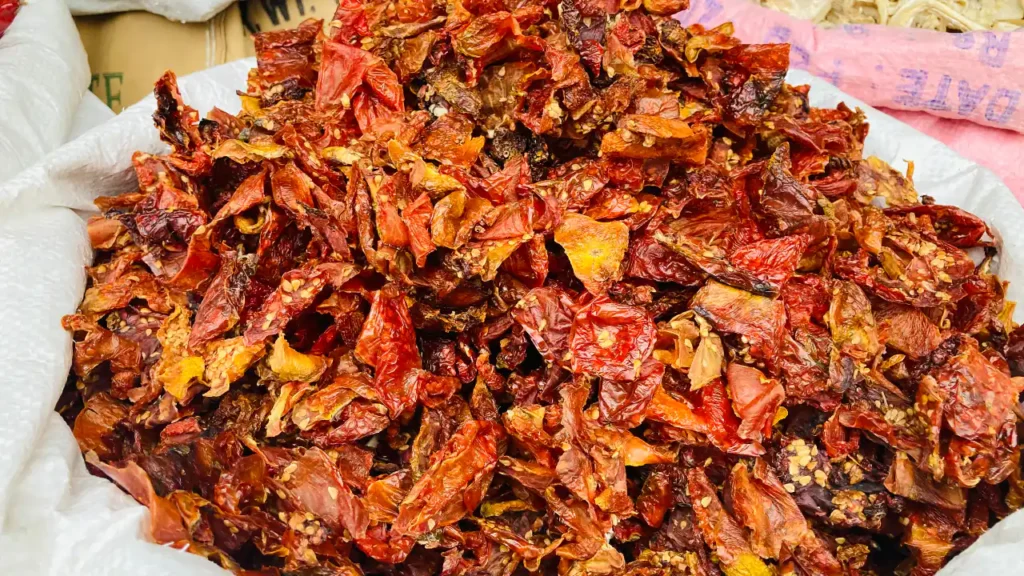

Hokhegad – Dried Fish
Fish that has been dried in the open air by the sun is called Hokhegad. The fish includes Bolinao and other regionally accessible fish species. Hokhegad has a long shelf life, just like other dried foods. This approach is economical and efficient. These dried fish are available in markets from the winter months through March and April. It provides protein and serves as a form of medication for people with asthma. 100 grams of dried fish have 300 calories and around 80% protein.
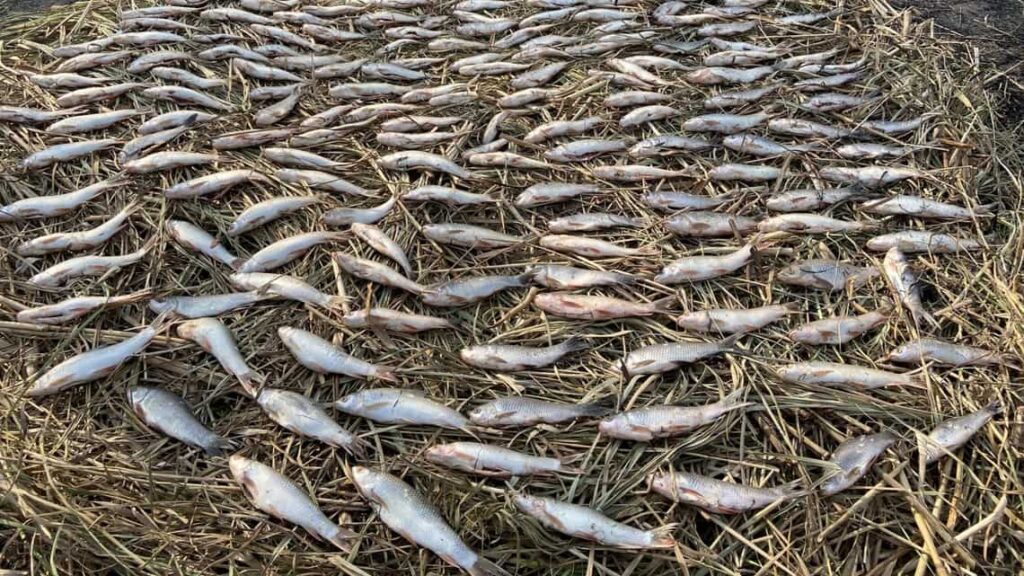

Handh – Dandelion Greens
Handh, also known as dandelion greens (Asteraceae), is a wild leafy green that is dried in the sun so that it can be prepared year-round. These are popularly prepared with chicken in new mothers’ homes because it is said to increase body heat, benefiting both mother and child. The festival is known as Handhbaata. The medical benefits of Handh include the treatment of chest infections, the common cold, and back pain. It’s also known to increase one’s immunity.
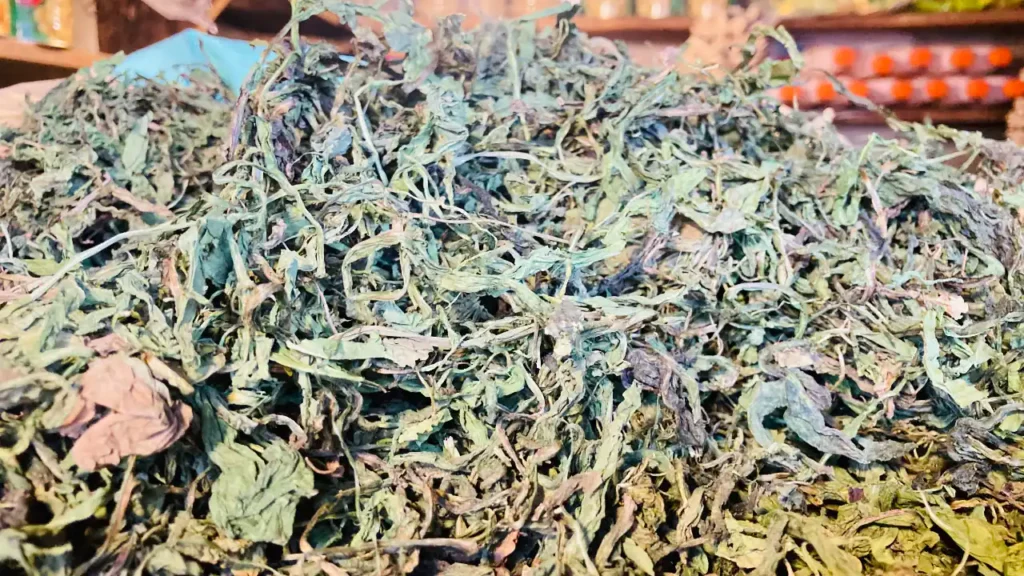

Gogji Aar – Dried Turnip
Another item on our winter menu is Gogji Aar, or dried turnips. Even while dried turnips are used in other regions of Asia, such as China, they are dried very differently in Kashmir. The turnips are cleaned, peeled, and cut thickly. A small hole is then made in the center of each slice with a sharp knife, and all the slices are joined to a string before being strung and dried in the sun. Cooking methods for the Gogji Aar include mutton, paneer, and other ingredients.
Read also : WAZWAN – KASHMIR FOOD AND CUISINE
Farrigad – Smoked Fish
Smoked fish also known as “Phari” is a traditional Kashmiri winter dish. The reddish-brown smoked fish is thought to offer defense against cold-related illnesses. It is only accessible after autumn arrives in the Valley. Before being smoked, these fish are placed on grass. The grass is then set ablaze, and the fish are smoked there till roasting. Prior to smoking, the fish are not cleaned or gutted.
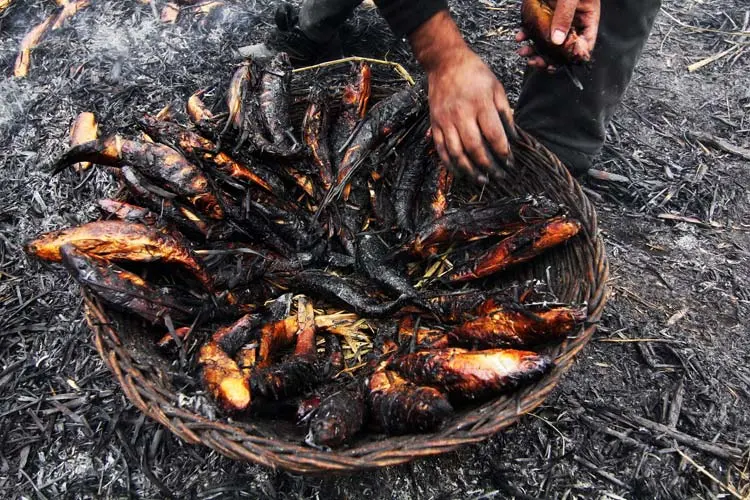

Bamchoont – Dried Quince Apple
Quince, (locally known as Bamchoont), is a small tree or shrub of the rose family (Rosaceae), grown for its edible fruit. Quince is the only member of the genus Cydonia and is native to Iran, Kashmir, Turkey, and possibly Greece and the Crimean Peninsula. Quince is also a good source of calcium, iron, potassium, magnesium and copper. With a very low calorie density, quince can be enjoyed as part of a healthy eating plan.


Among the Kashmiri Hokh Syun, dried quince apples, also known as Bamchoont Hachi in the area, are among the most prized and cherished. The best quince apples are selected with care, then properly sun dried under hygienic conditions. When the water content is dried out, the texture and flavor become more potent. This delectable Kashmiri meal, which is produced by drizzling some yoghurt over fried dried quince, is one you won’t want to miss.


Huch Palak (Dried Spinach) – Dried Vegetables
The people of Kashmir have mastered the skill of drying out your favorite vegetables, including spinach. Fresh spinach is spread out on enormous sheets known as Dastarkhuans and sun dried until it is completely dry. You may use it all year long once it has dried! Both fresh and dried spinach are fantastic and delicious.


Shab Deg
When this Kashmiri treat is mentioned, people get nostalgic for happier days in the past. Shab literally means “night,” and Deg literally means “heavy-bottomed vessel.” Shabdeg cooking is a long-forgotten custom. Mutton and turnip are slow-cooked and boiled throughout the night to produce a creamy and flavorful stew. The ingredients include turnips, balls of ground beef, bits of mutton, and a mixture of spices that includes saffron and almonds. To stop fumes from escaping, the Deg or cooking pot is covered with a lid and then sealed with dough. This method enhances the flavor, making the shabdeg an exceptionally tasty and rich treat to appreciate.
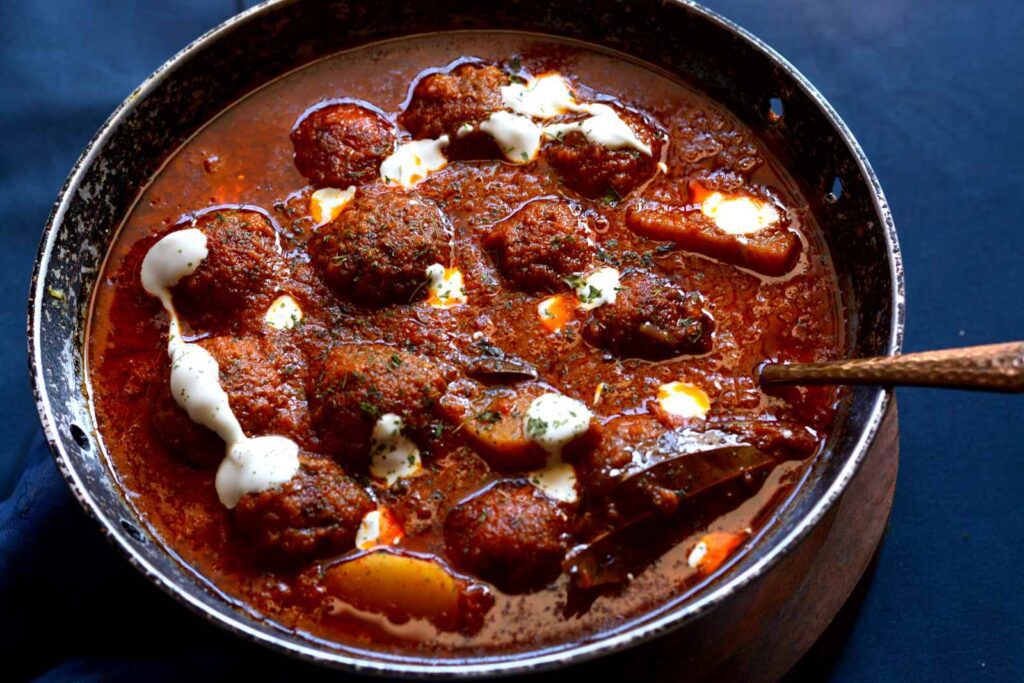

Nadru – Lotus Stem
In Kashmir, Nadru (lotus stem) is prepared in a variety of ways, frequently (and notably) with spinach. The stems are spiced and served hot with rice after being deep-fried in mustard oil until crisp and golden brown. In the Valley, Nadru cakes are also prepared during the winter and fried in mustard oil.


Tang Hachi (Dried Pear)
Dried pears, also referred to as Tang Hachi in local dialect, are prized in the Charar Sharief region of central Kashmir. Merchants erect stalls to sell dried pears throughout the winter in the hillside town of Budgam’s lively marketplace just beyond the gateway of saint Noor ud Din Reshi (R.A). Pears are divided into little pieces during harvest time and then sun dried.
The preparation is quite straightforward, but the pears are carefully dried to prevent exposure to moisture and heat. Tang Hachi come in three different flavors and sizes: Wanhaet (with a mild taste), Sirkhaet (sour and sugar-free), and Farashi (having mouth-watering taste).
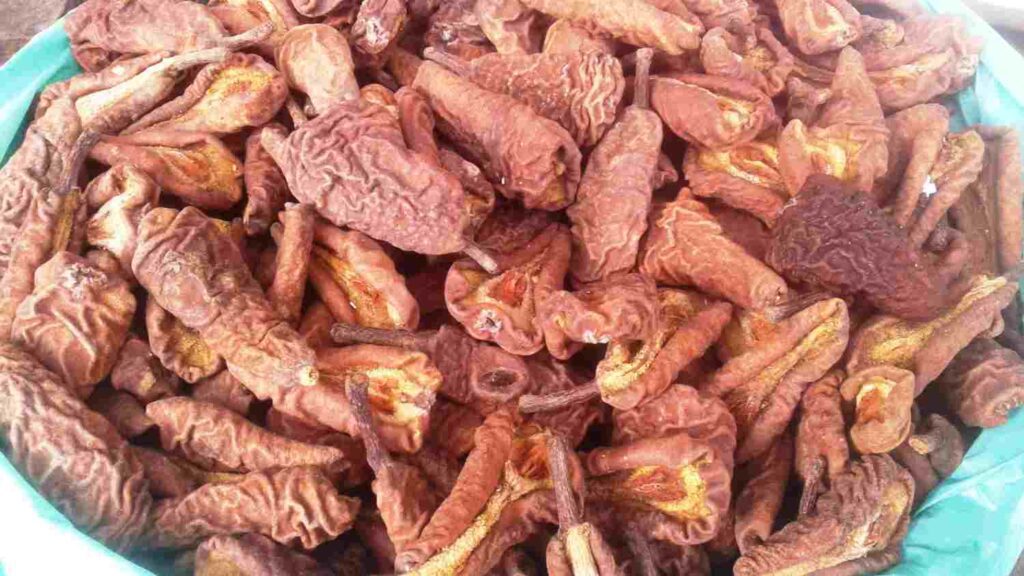

Harrisa
A person may be tempted to indulge in this beautiful delicacy known as Harissa by the sound of hot oil sizzling over the meticulously prepared Harissa topped with a succulent kebab and served on hot Kander Czot (traditional Tandoori bread). One of the valley’s most famous dishes is Harissa, which the locals enjoy during the ferociously chilly winter months. In a way, eating Harissa is an experience in and of itself.
The flavor of fennel, cardamom, and other spices that are baked in large ovens and left overnight before serving to let the flavors meld perfectly with the smoothness of the mutton. Harissa stores have typically been found tucked away in Downtown or Shahr-e-Khas. However, these stores also appeared in the suburbs and uptown as a result of the increase in their demand. The creation of the ideal Harissa is a difficult thing to pull off, starting with the careful selection of the best mutton and continuing with the meticulous addition of spices, constant stirring, and patience.
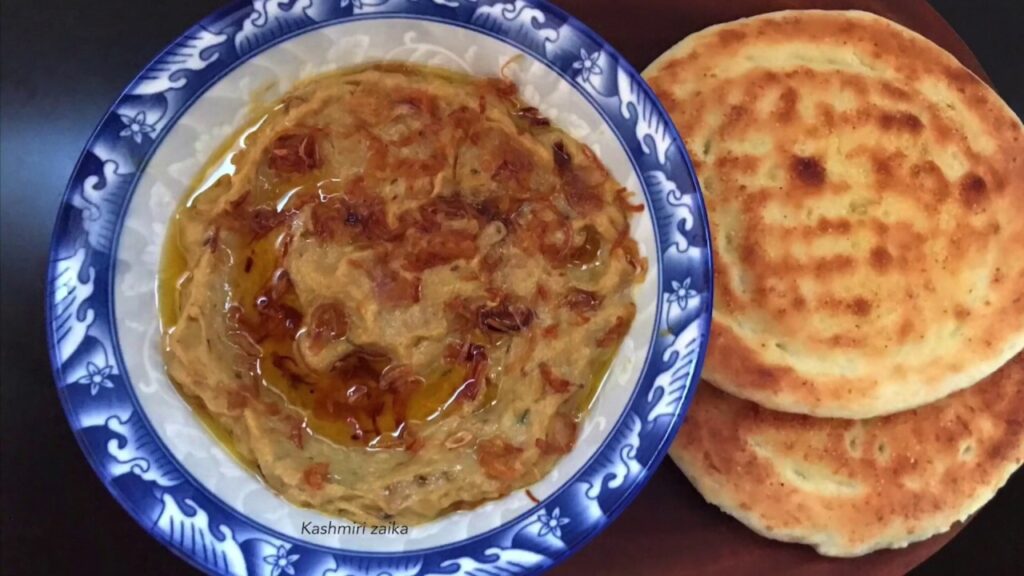

Kehwa
In Kashmir, Kehwa or Kahwa is a well-known wintertime brew. It is a Kashmiri tea that tastes a lot like green tea. Saffron, cloves, cinnamon, cardamom, and other spices are used mostly to make Kehwa.


Almonds, cherry pistachios, and cashew nuts, among other chopped dry fruits, are some other ingredients used in kahwa. In Kashmiri families, it is typically offered following meals.
In the past, kahwa was made in a copper kettle called a Samovar. To keep the tea warm, live coals are inserted in the Samovar’s middle cavity. The water is heated in an area around this cavity before being combined with the tea leaves and other components. Tourists swarm to this location for a taste of tradition since the Saffron Kahwa served along the Srinagar-Jammu national highway close to Pampore is well-known.
Where To Buy
Today there are many stores which provide some of these delicacies to your doorstep, but my recommendation would be Amazon. You will not find everything that I mentioned above on Amazon, but some products are available. I will mention links below to some of the products you can buy from Amazon.
Aarafh Shahi Kashmiri Qawah (Kahwa) Tea, 500 GM (250 GMx2) Combo


Dry Pears by Vale Of Kashmir, Sun Dried Pear Chips 100 Grams in Food Grade Jar, Good for Digestion, Contains Fiber


CONCLUSION
This is a never ending topic, but I tried my best to cover as much as I could. I believe in improvement, so any extra information you can provide, please feel free to mention that in comments.

